So, I should finally get around to describing my trip to Romania. I returned two weeks ago, but I’ve been busy since then, and it takes ages to upload pictures on my crappy far-slower-than-advertised T-DSL line. It was an incredible three weeks, so this will be a long blog entry, even though there’s lots more that I’m not mentioning.
We arrived first in the Banat (or the current Romanian part of it, in TimiÅŸ county), after driving though Hungary, crossing the border at Cenad, into a rich green landscape with an enormous sky and a series of people selling melons at the side of the road. In the Banat, the land is flat and the sky is both wider and higher than a regular sky.
Over the next few days we visited villages in the surrounding Banat, where my girlfriend’s family lived before emigrating in the late 80s, such as Bogarosch/Bulgãrus and Groß-Sankt-Peter/Sânpetru Mare. The current inhabitants welcomed us into their homes, without fear that we wanted them back. People here live from the land, growing their own food and keeping their own animals.
While there I started reading Richard Wagner‘s (not him) novel Habseligkeiten. He’s from Perjamosch/Periam, along the road. He covers the local history fairly well, from the point of view of the ethnic Germans, who were naively caught up in every political change that swept across them. That’s including
- Austro-Hungarian rule before the first world war.
- The first world war experienced at a distance, with some German men fighting far away and returning.
- The second world war, with some German Romanians serving in the regular German army (by going to Germany), some in the SS (pretty much mandatory for Germans outside of Germany), and some in the Romanian army (which fought on the side of Germany until Romania switched sides in 1944, courageously but wisely as the Soviets started to win).
- Transport of many Germans (mostly men, even those in the Romanian Army) to Russia in 1944 for five years of forced labour.
- returning from Russia to Communist rule, with no private property, inefficiency, and corruption.
- Then forced relocation of whole families to the barren Bărăgan plain in the 1950s.
- Returning again five years later.
- Followed by emigration to Germany during CeauÅŸescu‘s 1980s and, after the 1989 revolution, in the 1990s.
I’ve heard very similar stories from my Girlfriend’s parents and grandparents, who also mention time in Germany and in American prison camps, but the book wraps things up nicely. There’s lots of adventurous stories to be told. Like everyone, it avoids the holocaust.
TimiÅŸoara itself is part old-town and part crumbly soviet concrete. The old buildings have particular charm because they are falling apart.
While there, I met some of the Timisoara LUG people. Dan Damian (not pictured) had invited us, but couldn’t stay more than five minutes because he was very ill. I’m afraid I’ve already forgotten the names of everyone else, but I remember that the guy on the left was doing an anti-virus thing for Google Summer of Code, and I think he’s Török Edvin. It was interesting to speak to these guys about how they are making their way in modern Romania. I was also ill for the next four days. Maybe it was the water, or maybe Dan is to blame somehow.
As I noticed later, TimiÅŸoara is entirely different to Bucharest or other parts of Romania that I saw. In Timisoara watermelons are sold from huge piles at the side of the roads in to the city and even on street corners in the city. People eat the watermelons in the street and spit out the seeds. Horse drawn carts share the roads with cars, often delivering the watermelons. Sometimes you’ll see a regular saloon car driving by, completely full up to the roof with watermelons. There are no watermelons in Bucharest as far as I can tell. It’s better where the watermelons are.
We drove from TimiÅŸoara to the capital, Bucharest, via Sibiu/Hermannstadt, on the new roads that the EU has built. The EU will be happy to know that the road is full of lorries delivering produce, but the two-lane roads are lethal.
Bucharest, is really not worth the visit except to get a more complete picture of Romania. There are a few impressive older buildings but it’s mostly large and concrete and choking in traffic. Ceacescu’s government palace is huge, but too silly to really impress. There’s a wonderful village museum, with old relocated wooden and stone buildings, but it’s nicer to see them for real outside of Bucharest.
Prices here are comparable to western European cities, but that doesn’t feel like value for money. Advertising has obviously taken hold, seemingly driven by a monotonous few companies selling advertising space on the sides of buildings and large video screens. Life must be strange for the people who live in Apartments whose windows are covered by 6-story-high posters. A few companies are noticeably trying to establish themselves in this new market: Orange, Coke, and Nescafe (as an upmarket brand, strangely), along with a few German food brands. There are several new shopping centers selling western products such as electronics. Credit is advertised heavily and I don’t think people are expected to buy things outright.
Hope for the future is obviously widespread, presumably due to expected EU membership, as you can tell from all the building work and the credit boom. But it seems to be only the first stage of capitalism. People are trying to make a fast buck, often at the expense of their customers instead of building long term reputations and relationships, and either competitive pressures are not being felt, or something is stopping competition from happening. The government does not seem to be fostering marketplaces or making consumers feel protected. The tourist will notice that when changing money (the exchange rates listed are generally only for amounts over 10,000 Euros) or paying extra to use his camera. The guy buying a car or washing machine on credit will notice that when he sees an extra 5% yearly interest payment for administration.
This lack of long term thought may also be responsible for how Romanians drive their cars. If not then there’s either a general failure to assess risk, or human life is considered worthless.
Oddly, government buildings are already flying the EU flag, as if Romania had already joined. That’ll look embarassing if they don’t meet the grade next year either. They probably will, but they don’t seem entirely ready for it. They also fly the NATO flag, which seems out of place on civilian institutions such as parliament or schools.
In Bucharest I met an old friend from Paderborn, Christian Schoppmeyer, who is now running the Bucharest office of Sagem Orga (formerly Orga), and some of his friends there. It’s great to see him doing well. Bucharest may be crappy, but it offers a lot more than Paderborn.
After visiting Sigişoara, we spent a week in the hills, in the village of Măgura, in the curve in the Carpathian mountains, near Zărneşti, near Braşov.
We stayed at Villa Hermanni run by Hermann and Katrina Kurmes, after it was recommended by Hans Gasser, a friend of a friend who had visited to do an article for the Sueddeutsche Zeitung on Romanian ecotourism. Hermann is an ethnic German from the neighbouring Vulkan village who returned to Romania after the 1989 revolution to do ecological tours of the area and its wildlife, as part of the Association for Eco Tourism in Romania.
The area, between the Bucegi and Paitra Craiului mountains, is beautiful and still inhabited by people who live from the land. There’s original forests with (unseen) brown bears and wolves still living in them.
However, poor locals are understandably selling their land for hotels and summer houses to be built, and it can’t be long before tarmac roads are built to service them, which will accelerate the destruction yet more. This isn’t allowed, because it’s officially a nature reserve, but the law is flexible in the face of corruption and beaurocracy, so it looks like this valley will be completely transformed in another couple of years. Visit now before it’s too late. We are tempted to go again in the winter for snow-shoe trecking.
A big reason for our visit was to see some of Romania’s brown bears. We only saw paw prints while walking in the hills, and in a nearby cave, but Katrina Kurmes took us to a nearby lookout hut where we could watch a bear arrive to eat food that was left for it. The bears are very shy of humans, but can lash out if surprised, and do tend to eat animals that have been left outside at night. Unlike Germany, Romanians continue to living fairly peacefully with them.
There is an obvious problem with litter. People just drop plastic bottles and packaging on the ground, even in the most beautiful places. My brain isn’t wired like that. This seems to be part of the short-term thinking problem I mentioned above. Luckily, it’s not too late to fix this, but it needs government help to get the rubbish down to the towns.
By the way, the ÅŸ characters are like sh in English. The ă characters are a kind of “uh” sound. The final i in words is not really pronounced, unless it’s ii at the end. See Wikipedia‘s Romanian Alphabet page for more and more correct descriptions.
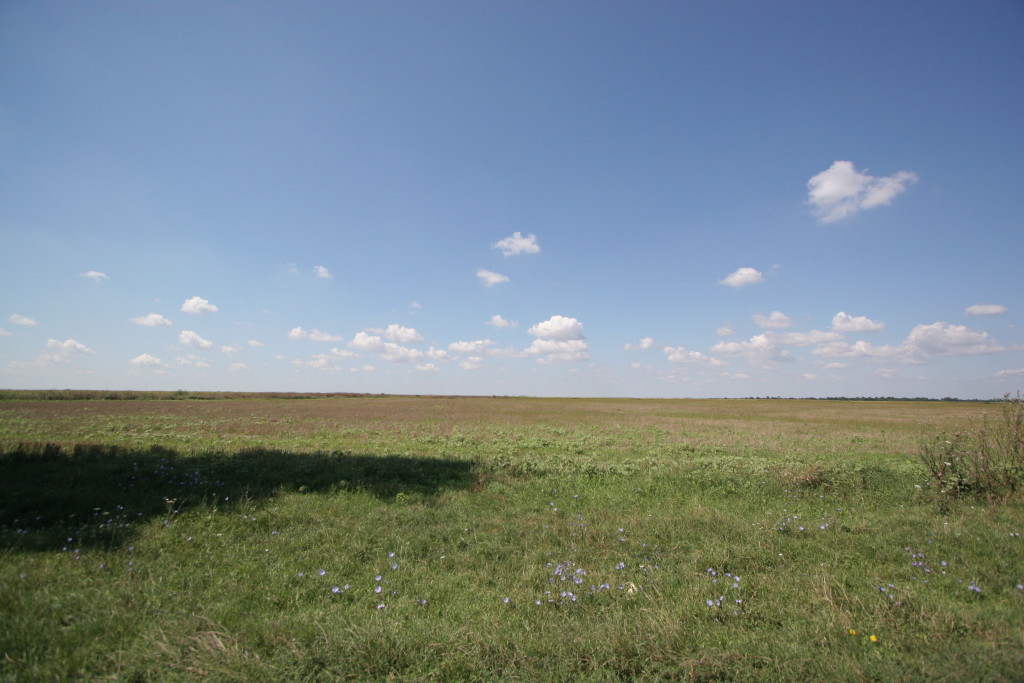
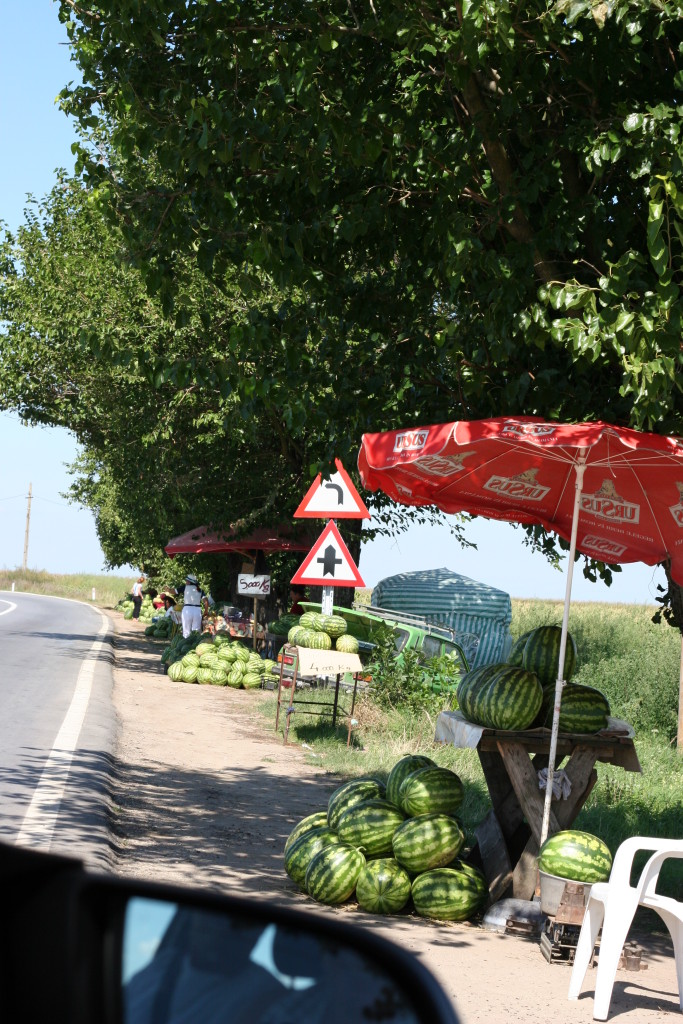
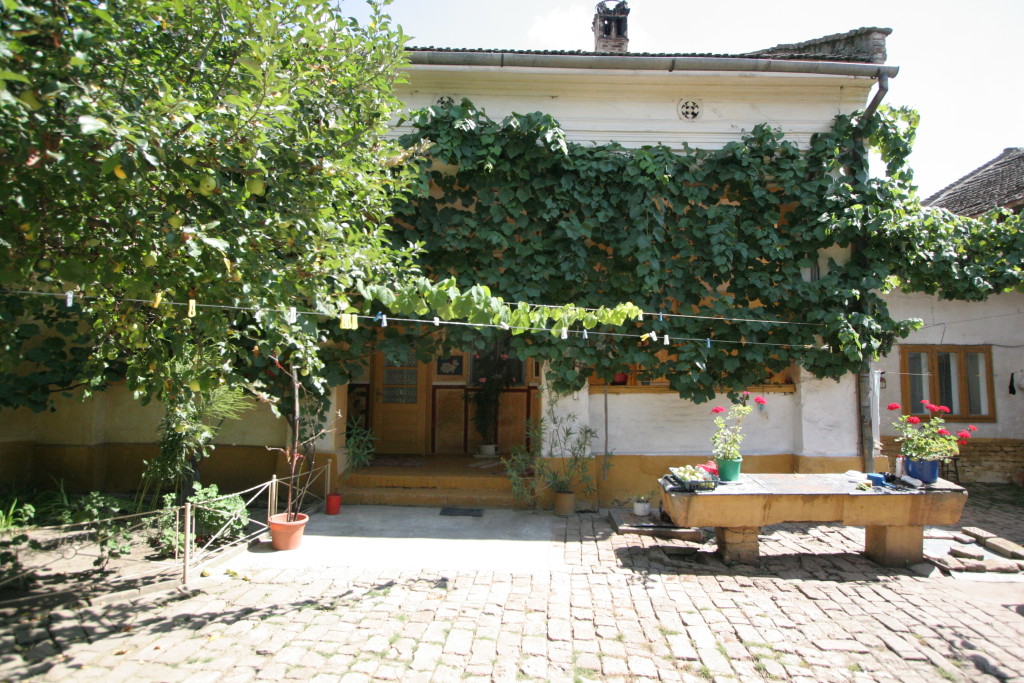
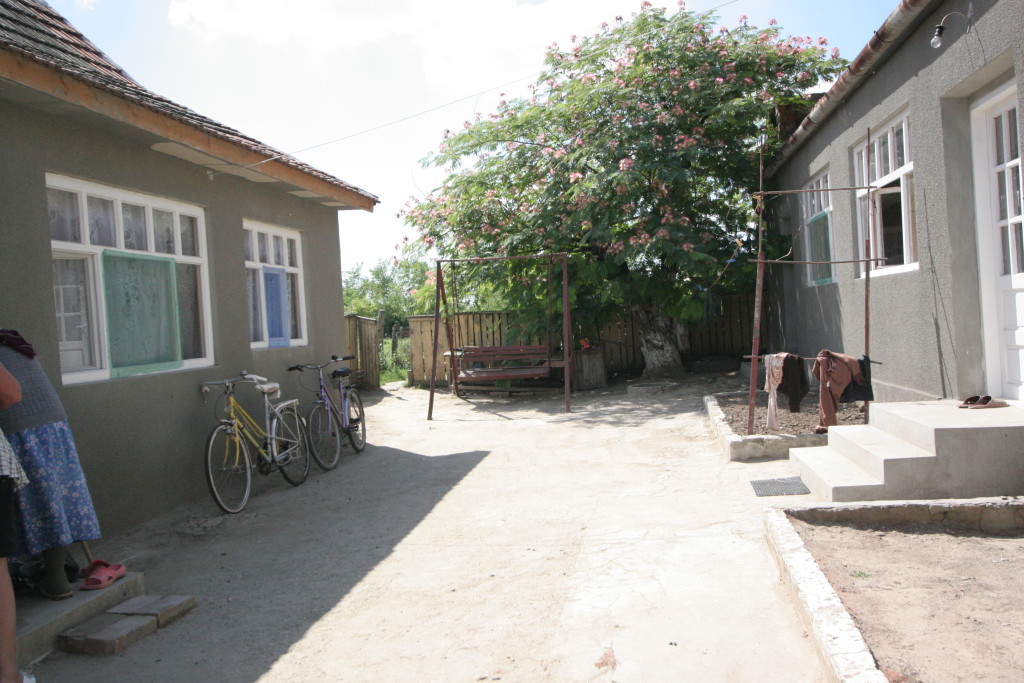
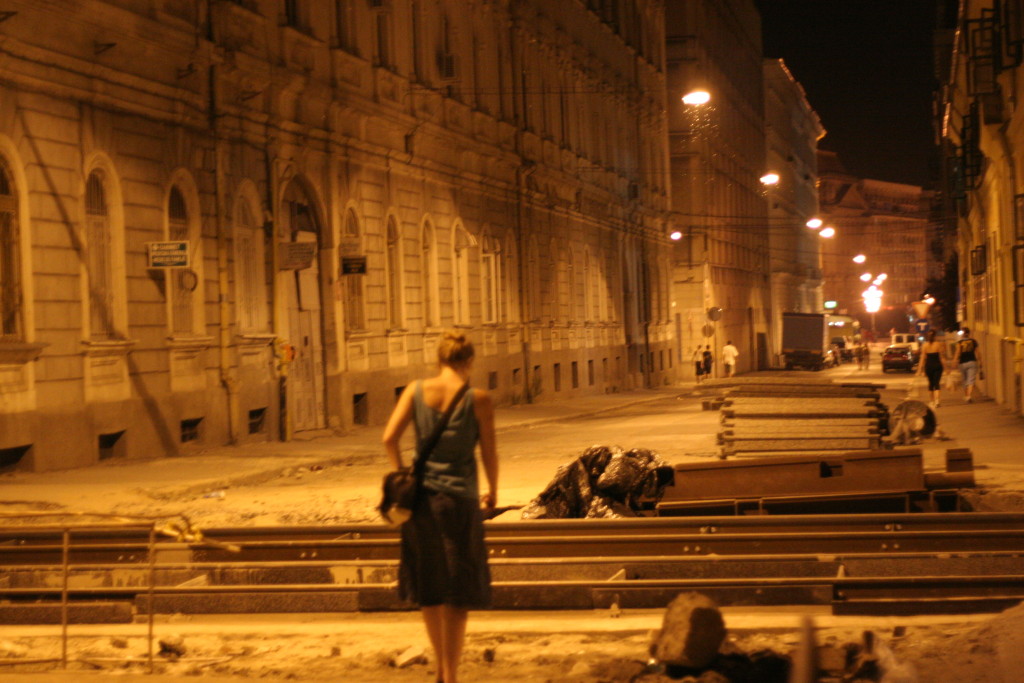
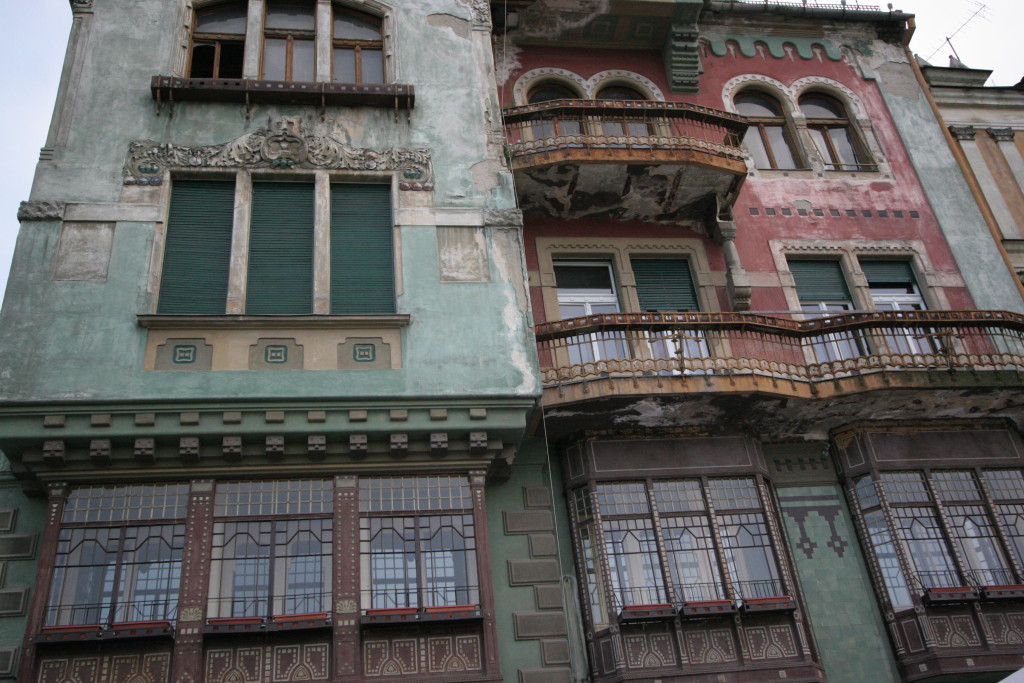
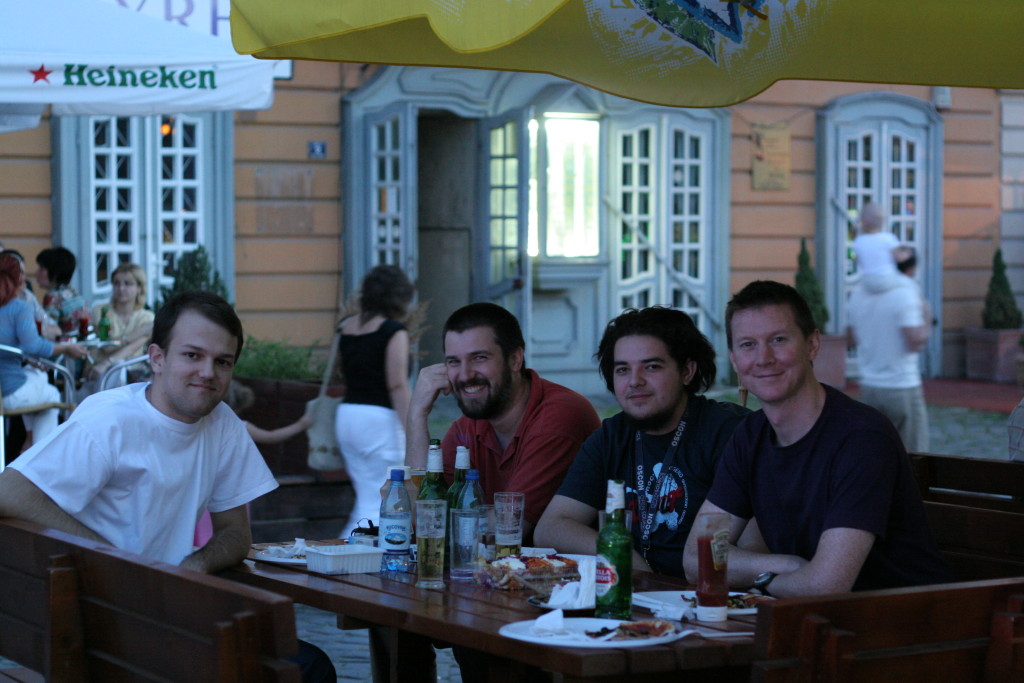

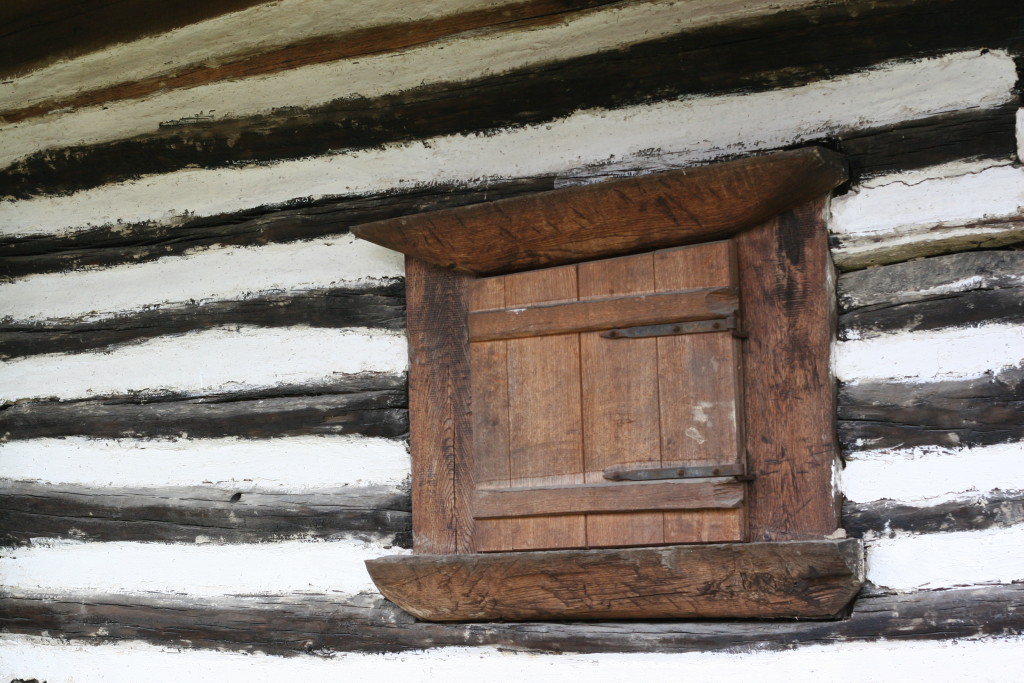
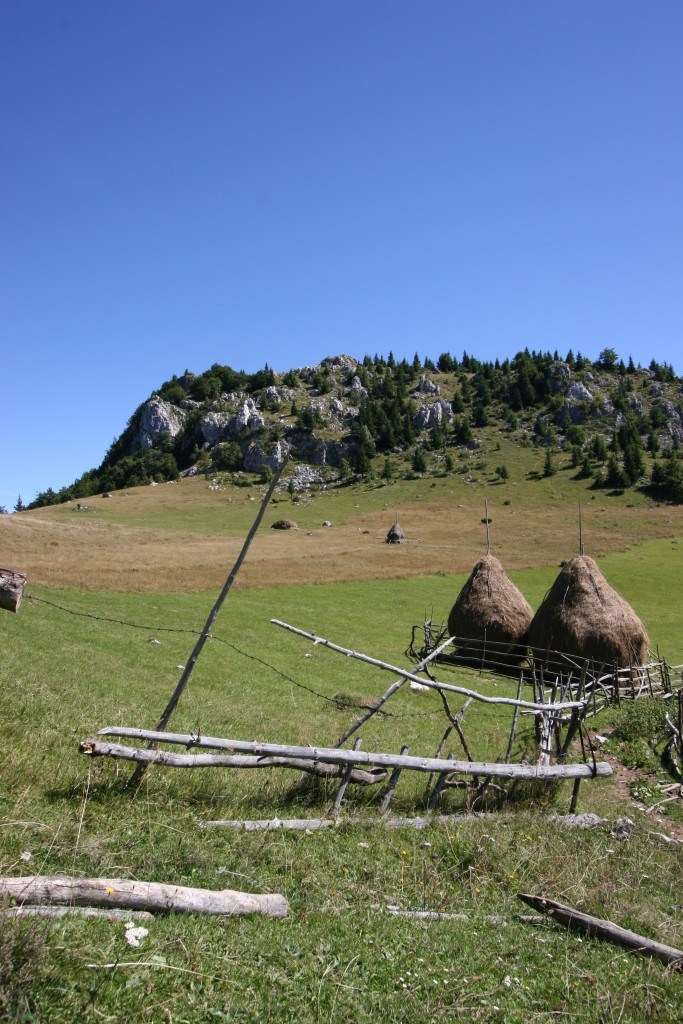
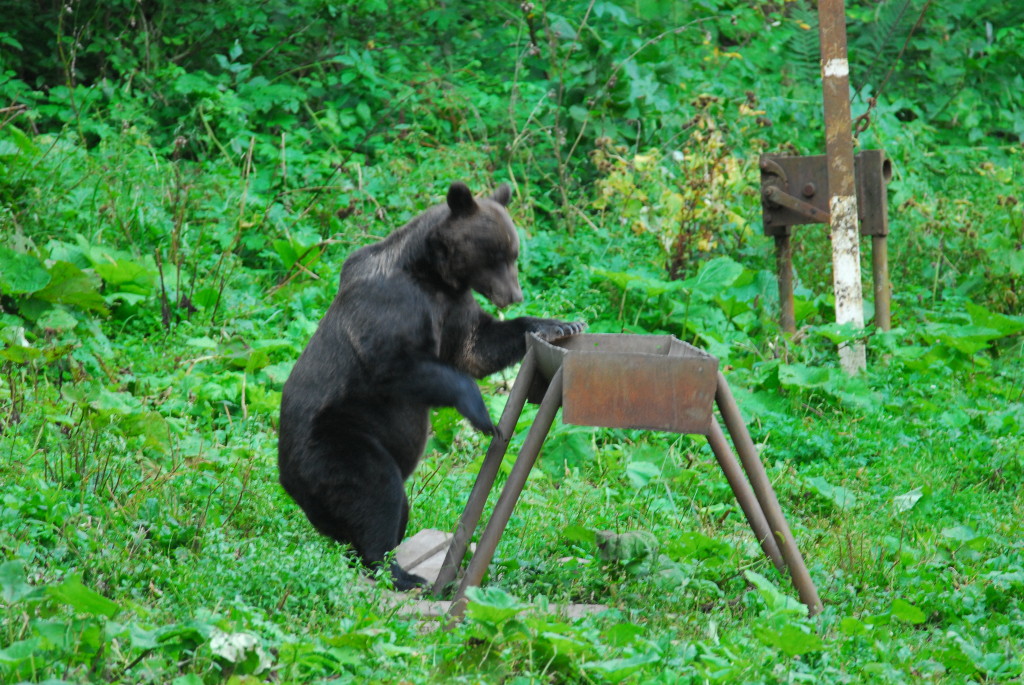
i’m living in bucharest and everything you said is true …
did you notice the dust/dirt that’s everywhere in our nation’s great capital ?
Yes, in Bucharest the air is brown.
First, a minor correction: “until Romania switched sides in 1943” – it was in 1944.
Second: no melons on the side of the road in Bucharest? Sorry, but what Bucharest have you visited? I guess it was because you went in Timisoara first, and the melons season ended?
Orange is not trying to estabilish a new market here, they are present for over 10 years and controll about half of the cellphone market (see CIA Factbook, the market was over 10 million phones in 2004). Coke is even older. Those companies advertise hard because of market competition – Orange fight heavily with Vofafone and Coke is hit hard by some local brands.
As for the EU flags on the buildings, Romania is in the pre-adheration stage, so it may be considered “half” in the EU. However, tommorow is expected the confirmation for 1 January 2007 for joining the EU.
—
nicu – from Bucharest
Thanks, Nicu, I corrected the year.
I have no explanation for the great melon mystery of 2006.
Thanks for the information about the brands. I had no idea that Orange had been there for so long.
As if New York is any cleaner than Bucuresti. Please. Lots of big, crowded cities with a population of 2 milion are dirty
And Coke, Nescafe or Orange are not by any means new to the country. I’m sure you noticed that anything
and any product can be found in that country. Many even better than in the US. The country was under cummunism for
a very long time…you can’t just erase everything and become like the westerners! It takes time to build, but I have
to say they are ahead of us in many aspects. Any how, hope you enjoyed your trip. Try going in the summer
to the balck sea. You will see many beautiful “things” there also. LOL
Hi, I’m a Romanian who’s been living in States for past 30+ years. It was interesting to read your comments but I’m wondering if perhaps your views of Bucharest may have been influenced by your girlfriend who, if I remember correctly is from Banat. It’s been my experience that those outside of Bucharest like to put it down because most in Bucharest have similar things to say about people living in the outter regions. Certainly the villages are most beautiful but those who want to attend universities tend to move to the city. Since your girlfriend isn’t from Bucharest – I would assume she’s more familiar with her region of origin than with Bucharest. I can tell you that having spent my summers at my grandparents farm and the year in Bucharest was really the best of both worlds. I have done a lot of traveling all over the world, and I can tell you that Bucharest has one of the most vibrant cultural atmospheres in the world. Hundreds of plays/operas/concerts/museums are available EVERY DAY at extremely low prices (by western standards.) Bucharest’s parks, lakes, boulevards, cafes and even Arc de Triumf have earned it it’s nickname of “little Paris.” It’s true that Romanians aren’t yet familiar with long term business/economic planning but this highly literate society has opened many MBA programs where I have full confidence that the latest in economic/marketing theory are being discussed. My theory about their current short sightedness is due to them being financially starved over the past 15+ years. They are barely trying to survive on their $300/monthly salaries and the current western market prices. My sense is that this will normalize once people – including professionals/intellectuals, are able to have sufficient funds to survive this drastic transformation. I have a lot of empathy for their struggle and I hope that they will be duely rewarded for their endurance. Romania is an incredibly beautiful country – and I look forward to retiring there. I hope you’ll give it a second chance and get a good tour guide next time.
I do agree with Tana regarding the dismissive views of Bucharest – I am originally from Bucharest and had to ‘suffer’ the ridicule of people from the rest of the country (obviously fuelled by reverse jokes from the Bucharest people towards all regions). I’m also a bit unsure about the “value for money” comments. It is the market that drives the prices – is a £100k garage in London good value for money? Apparently it is, as it was all over the media a few years ago. To answer one of your queries – life might be strange for people who live in apartments covered by large posters, but it is a matter of choice, as each affected flat has to agree and they are all paid by the advertising companies for their service. Finally, on the cheeky side, to complete Nicu’s comment, would it be ok now for the Romanian institutions to display the EU flag? :)
Bogdan,
> I’m also a bit unsure about the “value for money†comments. It is the market that drives the prices
My point is that I don’t think the market is really working properly yet, due to lack of competition, lack of regulation, and lack of customer expectations. It will get there. And things will improve as people believe that the market will keep working.
> life might be strange for people who live in apartments covered by large posters, but it is a matter of choice
Yes, I didn’t mean to suggest otherwise. However, it’s obviously the strange economic conditions which make this situation relatively attractive to the people in those apartments.
> would it be ok now for the Romanian institutions to display the EU flag?
Yes. Congratulations. Fly the flag high.
Romania is beautiful country, much nature.
Hi,
I am an Indian and got a job offer from Romania. Could you please tell me that how much money is sufficient to live in Bucharest? Initially for six months I will be alone then I call my family.
Accommodation Cost per month inclusive of all?
Education cost per month per child?
Food cost?
Local travel cost?
Mobile exp per month?
Medical insurance per person?
Thanks!
help this organization to build a sanctuary for the bears from romania by voting for free as many times as you want:
http://www.vote4cause.org/cause.php?id=34
hi, i would like if there are skiing possibilities in April in Romania, and also how is the nightlife scene in bucharest…
regards to all!
You summed up Romania wonderfully.
At the moment, I am trying to build up a photo library of great pictures of Romania, and I would be thrilled if you would consider adding one of your stunning pictures of Romania onto my site (http://www.Pictures-of-Romania.com ), along with a comment about why you liked that particular place so much.
It’s an awesome post in support of all the internet people;
they will obtain benefit from it I am sure.